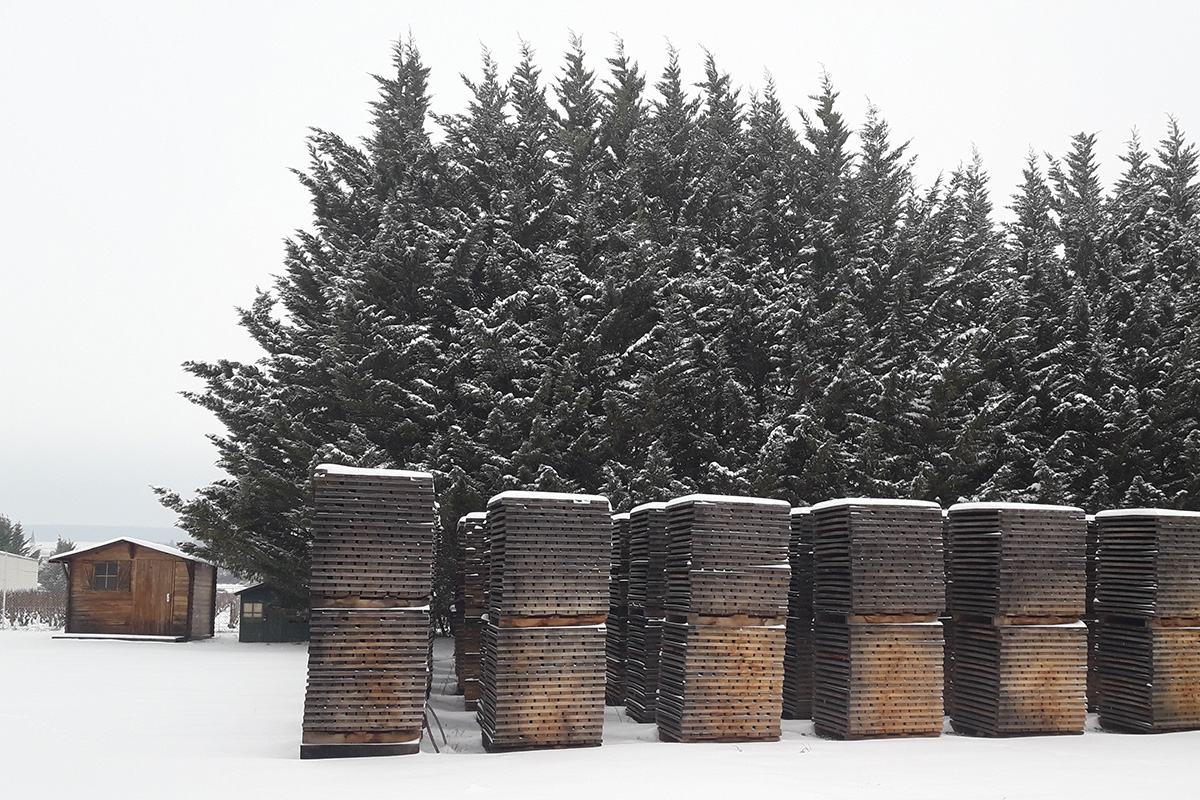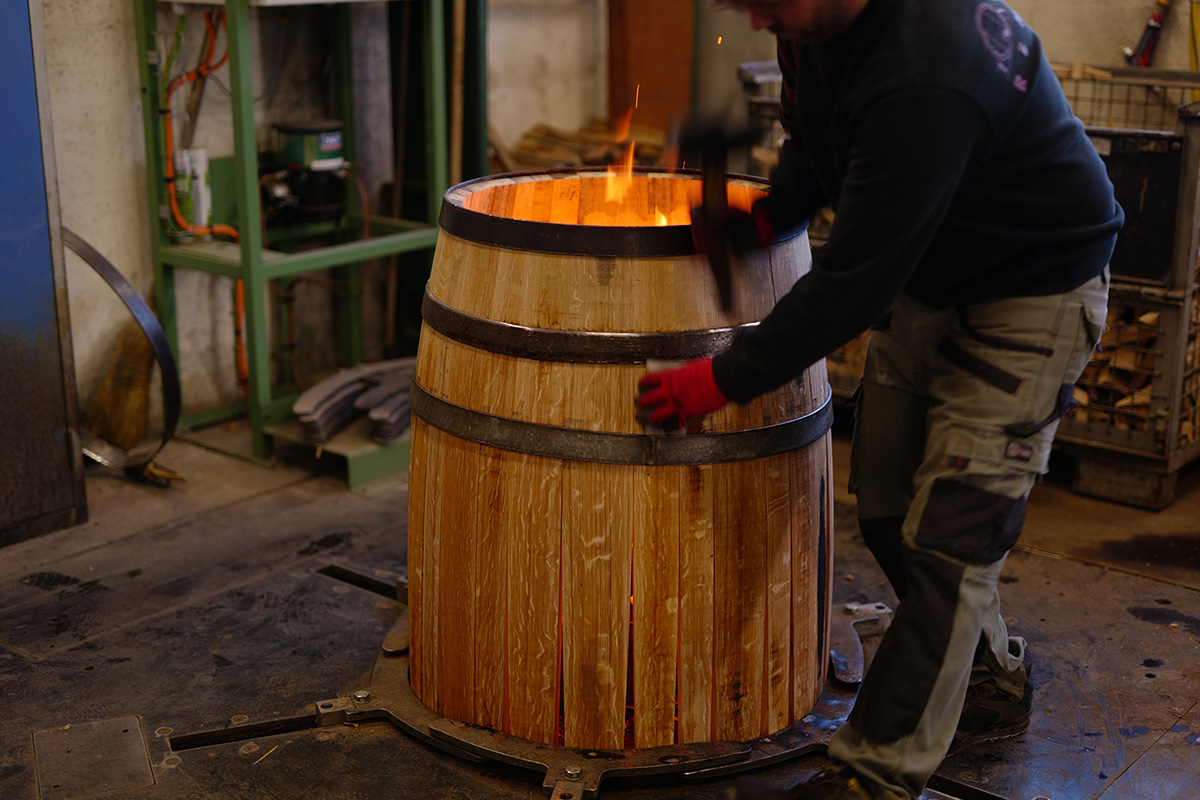In France, the Merrandier buys trees and processes the wood into staves that barrel companies, or cooperages, buy. Staves are for sale through a silent auction process. Barrel experts from each cooperage inspect the staves and submit their best bids in a blind, sealed envelope. The highest bid wins the lot, keeping prices high as large suppliers work to protect quality and supply.
Different forests lend different flavor components to the wine depending on location, microclimate and soil, like a vineyard location influences wine flavor. Wood grains vary from fine to compact to porous, which affects the amount and rate of extraction of the barrel’s tannins and aromatics. Both cooperages and wineries find their preferences and purchase to certain standards.




